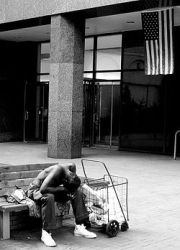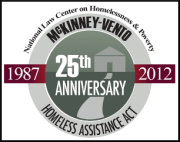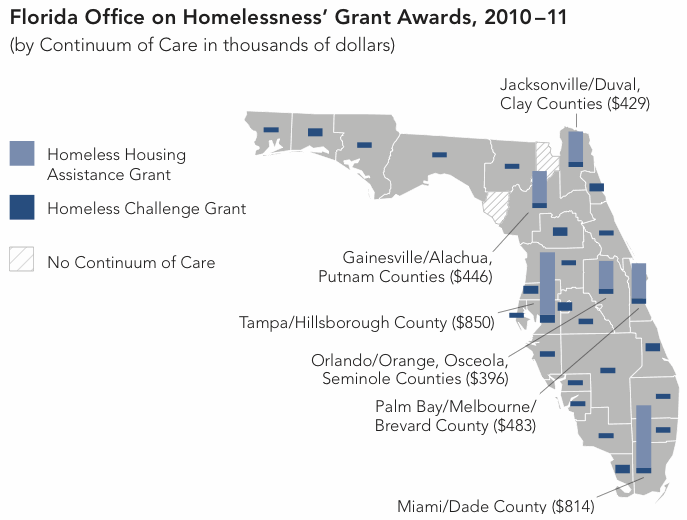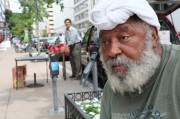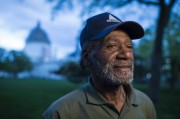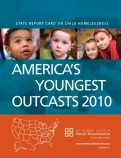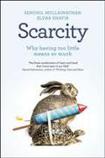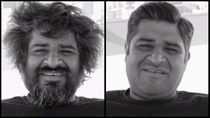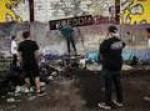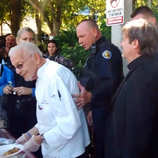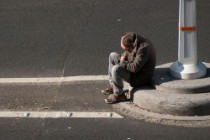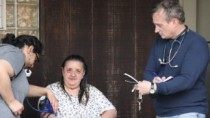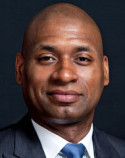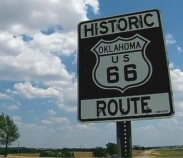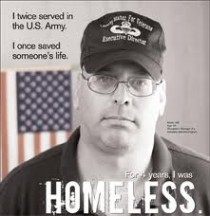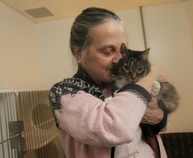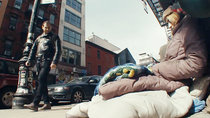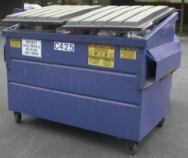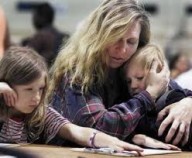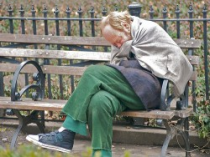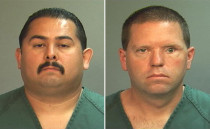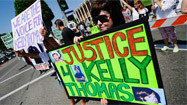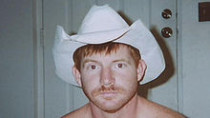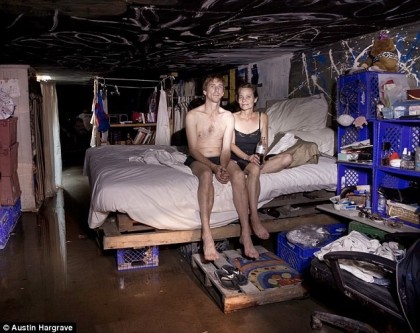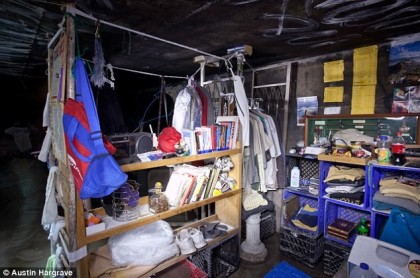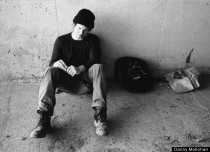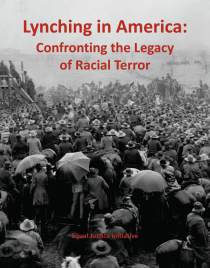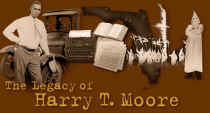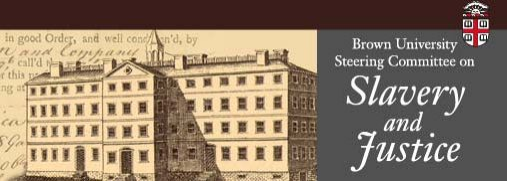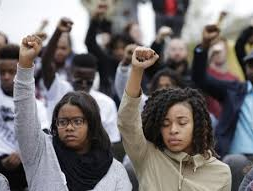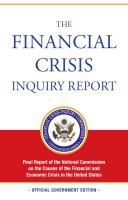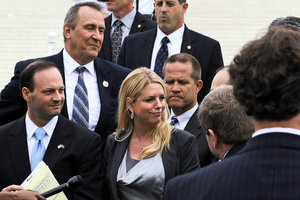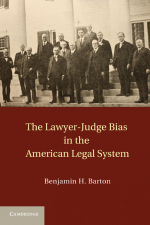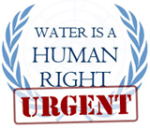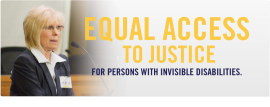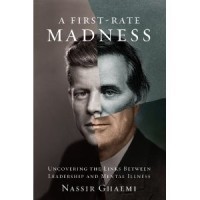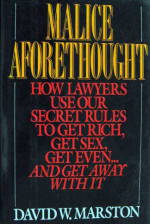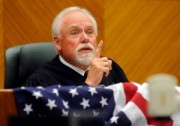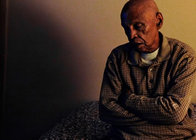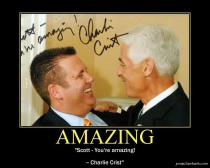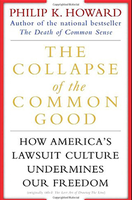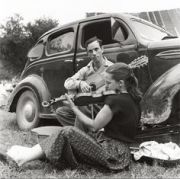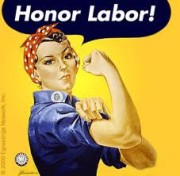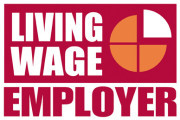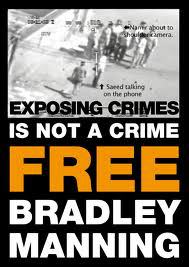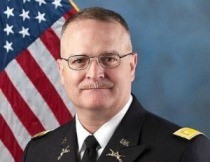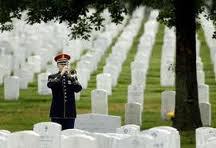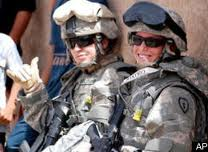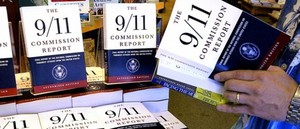...........................Homeless in America....................................
Robin Williams: Your Voice Will Be Missed
Poverty Insights, August 18, 2014
Robin Williams on Preventing Homelessness
Testimony before Congress (2 hour C-Span video).
In 1990, actor and comedian Robin Williams testified before a Senate panel chaired by Senator Edward Kennedy on preventing homelessness. See the clip below. A related bill became law later that year. Read more
Homelessness in the United States - Wikipedia
Homelessness in the United States
Wikipedia
Homelessness in the United States is an area of concern for social service providers, government officials, policy professionals, and society at large.[1] The U.S. Department of Housing and Urban Development in January 2012 annual point-in-time count found that 633,782 people across America were homeless. With 2007 as a benchmark, the data from the report showed a 6.8 percent decline in homelessness among individuals, a 3.7 percent decline of homeless families, a 13.1 percent decline of the unsheltered homeless population, and a 19.3 percent decline in persons experiencing chronic homelessness.[2]
One out of 50 children or 1.5 million children in America will be homeless each year.[3] In 2013 that number jumped to one out of 30 children, or 2.5 million.[4] There were an estimated 57,849 homeless veterans estimated in the United States during January 2013; or 12 percent of all homeless adults. Just under 8 percent of homeless U.S. veterans are female. Texas, California and Florida have the highest numbers of unaccompanied homeless youth under the age of 18; comprising 58% of the total homeless under 18 youth population [5]
Because of turnover in the homeless population, the total number of people who experience homelessness for at least a few nights during the course of a year is thought to be considerably higher than point-in-time counts. A 2000 study estimated the number of such people to be between 2.3 million and 3.5 million.[6][7] According to Amnesty International USA, vacant houses outnumber homeless people by five times.[8] Read more
McKinney–Vento Homeless Assistance Act
McKinney–Vento Homeless Assistance Act, Wikipedia
The McKinney–Vento Homeless Assistance Act of 1987 (Pub. L. 100-77, July 22, 1987, 101 Stat. 482, 42 U.S.C. § 11301 et seq.) is a United States federal law that provides federal money for homeless shelter programs.[1][2] It was the first significant federal legislative response to homelessness,[3] and was passed and signed into law by President Ronald Reagan on July 22, 1987. The act has been reauthorized several times over the years.[4]
The McKinney Act originally had fifteen programs providing a spectrum of services to homeless people, including the Continuum of Care Programs: the Supportive Housing Program, the Shelter Plus Care Program, and the Single Room Occupancy Program, as well as the Emergency Shelter Grant Program.[2][5]
It established the Interagency Council on the Homeless (later called the Interagency Council on Homelessness).[6] The legislation has been amended several times since it was first written and enacted.
Sponsored by Representative Tom Foley (D-WA), the bill was named after Representatives Stewart McKinney (R-CT) and Bruce Vento (D-MN). Read more
TITLE 42 - THE PUBLIC HEALTH AND WELFARE
CHAPTER 119 - HOMELESS ASSISTANCE
Subchapter I - General Provisions
Subchapter II - US Interagency Council on Homelessness
Subchapter III - Fed Emerg Management Food & Shelter
Program
Subchapter IV - Housing Assistance
Subchapter V - Identification and Use if Surplus Federal
Property
Subchapter VI - Education and Training
42 U.S. Code § 11301 - Findings and purpose
(a) Findings
42 U.S. Code § 11302 - General definition of homeless individual
(a) In general
For purposes of this chapter, the terms "homeless", "homeless individual", and "homeless person" means— [1]
(1) an individual or family who lacks a fixed, regular, and adequate nighttime residence;
(2) an individual or family with a primary nighttime residence that is a public or private place not designed for or ordinarily used as a regular sleeping accommodation
for human beings, including a car, park, abandoned building, bus or train station, airport, or camping ground;
(3) an individual or family living in a supervised publicly or privately operated shelter designated to provide temporary living arrangements (including hotels and motels
paid for by Federal, State, or local government programs for low-income individuals or by charitable organizations, congregate shelters, and transitional housing);
(4) an individual who resided in a shelter or place not meant for human habitation and who is exiting an institution where he or she temporarily resided;
(5) an individual or family who— Read more
The American Almanac of Family Homelessness 2013
Florida had an estimated 6,483 homeless families on a single night in January 2011, with providers serving more than twice their bed capacity over the course of the year.1
State Task Force on Homelessness: The Florida Council on Homelessness (established by statute in 2001) develops and coordinates policies to reduce homelessness in Florida.
Governor’s Appointee: Shannon Nazworth, Executive Director of Ability Housing, has chaired the Council on Homelessness and managed state-funded homeless programs since October 2011.
Florida Statutes, Chapter
420, Housing
Title XXX Social Welfare
Section 420.622 State Office on Homelessness; Council on Homelessness.—
Section 420.623 Local coalitions for the homeless.—
Section 420.624 Local homeless assistance continuum of care.—
Section 420.625 Grant-in-aid program.—
Section 420.626 Homelessness; discharge guidelines.—
Section 420.6275 Housing First.—
Section 420.628 Affordable housing for children and young adults leaving foster care; legislative findings and intent.—
Section 420.621 Definitions.—As used in ss. 420.621-420.628
Homeless man went to Harvard Law with John Roberts
The homeless man who went to Harvard Law with John Roberts
The Washington Post
By Terrence McCoy
July 13, 2015
The judge settled his gaze on the homeless man accused of sleeping beside an office building in downtown Washington.
It was a Saturday afternoon in early April at D.C. Superior Court, and Alfred Postell, a diagnosed schizophrenic, stood before Judge Thomas Motley.
Postell’s hair was medium length and graying. His belly spilled over his pants. A tangled beard hung from his jowls.
"You have the right to remain silent," a deputy clerk told Postell, according to a transcript of the arraignment. "Anything you say, other than to your attorney, can be used against you."
"I’m a lawyer," Postell replied.
Motley ignored the seemingly bizarre assertion, mulling over whether Postell, charged with unlawful entry, posed a flight risk.
"I have to return," Postell protested, offering a convoluted explanation: "I passed the Bar at Catholic University, was admitted to Constitution Hall. I swore the Oath of Office as an attorney at Constitution Hall in 1979; graduated from Harvard Law School in 1979."
That got Motley’s attention. He’d also graduated from Harvard Law School in 1979.
"Mr. Postell, so did I," Motley said. "I remember you." Read more
__________________________________________________________
Also see coverage of this story by the American Bar Association
- Homeless man was once a BigLaw lawyer and the chief justice's Harvard Law classmate, ABA Journal online By Debra Cassens Weiss July 14, 2015
The homeless man who
works in the Senate
The Washington Post
By Catherine Rampell
April 22, 2015
In the basement of the Dirksen Senate Office Building, 63-year-old Charles Gladden works alongside some of the nation’s most powerful people. For eight years, he has greeted senators, staffers and lobbyists in the hallways and the cafeteria, at exclusive banquets and special functions. He reflects fondly on some of the warmer colleagues who he says got the boot too soon.
But unbeknown to any of these bigwigs, or even to his employer, Gladden is homeless. He works in the Senate cafeteria, and he has not had a fixed address for the past five years. Read more
U.S. Dept. of Veterans Affairs
No Veteran Should Be Without a Place to Call Home
The VA is committed to ending homelessness among Veterans.
877-4AID-VET
877-424-3838
National Law Center On Homelessness and Poverty
1411 K Street NW, #1400
Washington, DC 20005
The mission of the NLCHP Law Center is to prevent and end homelessness by serving as the legal arm of the nationwide movement to end homelessness. To achieve its
mission, the organization pursues three main strategies. Read more
Myths and Facts about Homelessness
H3MythsandFactsaboutHomelessness.pdf
Adobe Acrobat document [19.9 KB]
The National Center on
Family Homelessness
America's Youngest Outcasts 2010 documents the numbers of homeless children in every
state, their well-being, their risk for child homelessness, and state level planning and policy activities. Using findings from numerous sources that include well-established national data sets as
well as our own research, we rank the states in four domains and then develop a composite of these domains to rank the states from 1 (best) to 50 (worst). Read more
The complete report is available for download, or below in PDF.
The National Center on Family Homelessness
NCFH_AmericaOutcast2010_web.pdf
Adobe Acrobat document [3.4 MB]
Not only are the poor disproportionately exploited, the very fact of being poor creates extraordinary vulnerability to countless major and minor daily roadblocks. Recent research by Sendhil Mullainathan of Harvard and Eldar Shafir of Princeton demonstrates that there is a strong connection between scarce resources and cognition: The more a person struggles financially, the less he or she can channel brain processes to completing other tasks. When you can’t make ends meet, the weight of worry occupies a large portion of the mind. Read more
Composite of articles and news stories, 87p
Professor Sendhil Mullainathan on Scarci[...]
Adobe Acrobat document [6.8 MB]
Haircuts For Homeless Men Reveal Something You Would
Never Expect
Addicting Info
Author: Vera
March 2, 2015
In our society, we’re used to making split-second judgments and assumptions about people just based on how they look. Being fully aware that this is the way our culture works, filmmaker Tyler Bridges set out to challenge our perception of the homeless by creating a video called "What’s The Difference," which was released in collaboration with the Union Rescue Mission in Los Angeles.
Bridges teamed up with hairstylist Tim Doma and a film crew to create an amazing short film that captured homeless men being given haircuts. Watch the powerful video for yourself, and see if it makes you think about the people we often ignore on the street any differently: Read more
Scientists Find Alarming Deterioration In DNA Of The Urban Poor - Huffington Post, by Nico Pitney
Scientists Find Alarming Deterioration In DNA Of The Urban Poor
Huffington Post
By Nico Pitney
May 8, 2015
The urban poor in the United States are experiencing accelerated aging at the cellular level, and chronic stress linked both to income level and racial-ethnic identity is driving this physiological deterioration.
These are among the findings published this week by a group of prominent biologists and social researchers, including a Nobel laureate. Dr. Arline Geronimus, a visiting scholar at the Stanford Center for Advanced Study and the lead author of the study, described it as the most rigorous research of its kind examining how "structurally rooted social processes work through biological mechanisms to impact health."
What They Found
Researchers analyzed telomeres of poor and lower middle-class black, white, and Mexican residents of Detroit. Telomeres are tiny caps at the ends of DNA strands, akin to the plastic caps at the end of shoelaces, that protect cells from aging prematurely. Telomeres naturally shorten as people age. But various types of intense chronic stress are believed to cause telomeres to shorten, and short telomeres are associated with an array of serious ailments including cancer, diabetes, and heart disease.
Evidence increasingly points to telomere length being highly predictive of healthy life expectancy. Put simply, "the shorter your telomeres, the greater your chance of dying." read more
Journal of Health and Social Behavior-20[...]
Adobe Acrobat document [574.4 KB]
JNCI J Natl Cancer Inst-2015-Rode.pdf
Adobe Acrobat document [1.4 MB]
After Recession, More Young Adults Are Living on Street
The New York Times
By SUSAN SAULNY
December 18, 2012
SEATTLE — Duane Taylor was studying the humanities in community college and living in his own place when he lost his job in a round of layoffs. Then he found, and lost, a
second job. And a third.
Now, with what he calls "lowered standards" and a tenuous new position at a Jack in the Box restaurant, Mr. Taylor, 24, does not make enough to rent an apartment or share
one. He sleeps on a mat in a homeless shelter, except when his sister lets him crash on her couch.
"At any time I could lose my job, my security," said Mr. Taylor, explaining how he was always the last hired and the first fired. "I’d like to be able to support myself.
That’s my only goal." Read more
Feeding The Homeless BANNED In Major U.S. Cities
Three people cited for violating Florida city's new
restrictions on feeding homeless
ABA Law News Now
Posted Nov 03, 2014
By Mark Hansen
Police in Fort Lauderdale, Florida, have begun enforcing a law that places new restrictions on feeding homeless people.
At least three people were cited Sunday for violating the new ordinance, including two members of the clergy and a 90-year-old advocate for the homeless, the Sun Sentinel reports.
The new law, which took effect Friday, is one of a several recent efforts taken by officials to crack down on the city’s burgeoning homeless population. The law limits
where outdoor feeding sites can be located, requires the permission of property owners and says that groups operating such sites must provide portable toilets.
As reported in the ABA Journal’s November cover story, at least 53 cities have enacted or considered similar restrictions on feeding the homeless in the past year and a half, according to the National Coalition for the Homeless.
Organizations in other cities have argued that such laws violate their rights to religious and political speech, and federal district courts have sometimes struck down laws on these grounds. In 2011,
however, the Atlanta-based 11th Circuit upheld Orlando’s laws as a reasonable time, place or manner restriction on political speech.
Arnold Abbott, who heads the group Love The Neighbor, was one of three people cited Sunday for willfully violating the ordinance as they set up a homeless feeding site
in a city park.
Abbott, who has won previous legal battles with the city over its feeding restrictions, vowed to challenge the new restrictions in court.
"We are simply trying to feed people who are hungry," said the Rev. Mark Sims, of St. Mary Magdalene Episcopal Church in Coral Springs, another of those cited Sunday for
violating the ordinance. "To criminalize that is contrary to everything that I stand for as a priest and a person of faith."
The other named person who was cited was Rev. Dwayne Black, pastor of The Sanctuary Church in Fort Lauderdale.
All three have been issued notices to appear in court, where they could be asked to explain their actions. Violations of the ordinance are punishable by up to 60 days in
jail, Local10.com says.
Mayor Jack Seiler defended the ordinance. He said providing the homeless with meals outside of shelters is "not productive."
VIDEO: 90-Year-Old Florida Man ARRESTED For FEEDING The HOMELESS In Fort Lauderdale!!
Feeding The Homeless BANNED In Major Cities All Over
America
The Economic Collapse blog
by Michael T. Snyder, Esq.
March 21, 2012
What would you do if you came across someone on the street that had not had anything to eat for several days? Would you give that person some food? Well, the
next time you get that impulse you might want to check if it is still legal to feed the homeless where you live. Sadly, feeding the homeless has been banned in major cities all over
America. Other cities that have not banned it outright have put so many requirements on those that want to feed the homeless (acquiring expensive permits, taking food preparation courses, etc.)
that feeding the homeless has become "out of reach" for most average people. Some cities are doing these things because they are concerned about the "health risks" of the food being distributed
by ordinary "do-gooders". Other cities are passing these laws because they do not want homeless people congregating in city centers where they know that they will be fed. But at a time
when poverty and government dependence are soaring to unprecedented levels, is it really a good idea to ban people from helping those that are hurting? Read more
American Bar Association
Commission on Homelessness & Poverty The Commission is committed to educating the bar and public about homelessness and poverty and the ways in which the legal community and advocates can assist those in need.
Homeless Veterans Justice Initiative Homeless Veterans Justice Initiative: Removing Legal Barriers to Benefits, Employment, Housing, Treatment and Services
Meet the doctor who treats the homeless, CNN
By Christie O'Reilly, CNN
May 8, 2015
Pittsburgh (CNN)Dr. Jim Withers used to dress like a homeless person. On purpose.
Two to three nights a week, he rubbed dirt in his hair and muddied up his jeans and shirt before walking the dark streets of Pittsburgh, searching for the very people he was trying to emulate.
Withers wanted to connect with those who had been excluded from his care.
"I was actually really shocked how ill people were on the street. It was like going to a third-world country," he said. "Young, old, people with mental illness, runaway kids, women (who) fled domestic violence, veterans. And they all have their own story."
Homelessness costs the medical system a lot of money. Individuals often end up in emergency rooms, and stay there longer, because their illnesses go untreated and can lead to complications.
It Takes a Village
The New York Times
by Charles Blow
September 23, 2011
"...as Broadway Housing Communities points out on its Web site, "permanent supportive housing for an
individual costs taxpayers $12,500 annually, compared to annual costs of $25,000 for an emergency shelter cot; $60,000 for a prison cell; and $125,000 for a psychiatric hospital
bed."
Around the corner came a little golden ball of sunshine named Madison, dressed head to toe in pink, hair arranged in Afro puffs, one wrist covered in turquoise beaded
bracelets, arms opened wide. She wrapped those arms around a teacher’s legs, hugged them close and looked up with the kind of smile that sets the world right.
Madison is 4 years old. She is happy and thriving. This is her second year of Head Start in the basement of a building that houses the poor and homeless in one of
Manhattan’s poorest neighborhoods. Read more
..............Hard times generation: homeless kids.................
Hard times generation: homeless kids
CBS News, 60 Minutes
by Scott Pelley
March 6, 2011
For some children, socializing and learning are being cruelly complicated by homelessness, as Scott Pelley reports from Florida, where school buses now stop at motels
for children who've lost their homes.
One of the consequences of the recession that you don't hear a lot about is the record number of children descending into poverty.
The government considers a family of four to be impoverished if they take in less than $22,000 a year. Based on that standard, and government projections of unemployment, it is estimated the poverty
rate for kids in this country will soon hit 25 percent. Those children would be the largest American generation to be raised in hard times since the Great Depression.
In Seminole County, near Orlando, Fla., so many kids have lost their homes that school busses now stop at dozens of cheap motels where families crowd into rooms, living week to week. more
Jacob Braverman, age 14. His family lost their house suddenly in October. When he got off the bus that day, the door was locked. "That was the last thing that I expected," he told Pelley. His mother, Rosa, lost her job. But the eviction was a shock. The bank told Rosa she had 30 days, but it was five days later that the cops moved them out. There's a lot of chaos in foreclosures all across the country because of the sheer number of them. Read more
Destiny Corfee, age 11, joined the line at one local motel a year ago. "I never really noticed what people were
actually going through until now; until we're actually going through it too," she told "60 Minutes" correspondent Scott Pelley.
Destiny's parents David and Theresa never imagined their family homeless. Together they were making about $40 an hour detailing expensive cars. There was a three-bedroom
home, vacations and extras for the kids. But both jobs went, and then the house. Evicted, they found that the homeless shelters wanted to split their family up - boys and girls. "That was definitely
something that I wasn't gonna have, was being separated at a time like this. I figured the time like this that we needed to be together more than anything," David Corfee said. So David, Theresa,
Destiny, Jorge and Chance, moved into their van. "I was embarrassed that maybe one of my friends might see me. I don't want anybody to know that I was actually in there," Destiny told Pelley.
The van, according to Destiny, was parked at a WalMart. "We would actually go in WalMart and clean our self up before we'd go to school," her brother Jorge remembered.
"How would you do that?" Pelley asked. "I would like wash my face, and like, take a tissue and wash my arms and stuff," Jorge explained. "We would bring the toothpaste and the toothbrush and the
brushes so we'll go brush our hair in the mirror and people would see us," Destiny added. "And it would be kind of weird. But we worked through it."
"Tell me about the motel that you're living in now," Pelley said. "Well, it's a lot better than the van!" Destiny replied. But Jorge pointed out the living space is small: two rooms for the five of
them. Their possessions, family photos - you name it - went into storage. And they lost it all, seized and sold, when they couldn't pay that bill. "Most of my stuff was in there; my scooter, my game
system, all my games, my clothes. So I lost most of my stuff," Jorge said. "I had so many of my toys and things. My Barbie dolls, clothes, and it was just all gone," Destiny said. The neighborhood
around the motel is scary, she added. "You hear on the news all the time about shootings, and it's all right there." Read more
In Steinbeck's footsteps: America's middle-class
In Steinbeck's footsteps: America's middle-class underclass
By Paul Mason
BBC Newsnight
In The Grapes of Wrath, John Steinbeck describes the harrowing journey of the Joad family - migrant workers forced to leave their home during the Great Depression - a
story still relevant to those facing the realities of America's current economic crisis. Read more
How many Americans are actually middle class?
Wikipedia quotes Dante Chinni: "Everyone wants to believe they are middle class...But
this eagerness...has led the definition to be stretched like a bungee cord — used to defend/attack/describe everything...The Drum Major
Institute...places the range for middle class at individuals making between $25,000 and $100,000 a year. Ah yes, there's a group of people bound to run into each other while
house-hunting."
Wikipedia also notes, "Middle class persons commonly have a comfortable standard of
living, significant economic security, considerable work autonomy and rely on their expertise to sustain themselves."...and..."Seen from a sociological
perspective based on class-cleavages, the majority of Americans can be described as members of the working class." Read more
Homelessness is a problem across age, race, class, education, everything. Cornel West said that Dr. Martin
Luther King, Jr., died for sanitation workers in Memphis April 4, 1968. We all have value.
New kennel allows homeless families to keep their pets
WLWT 5 News
Limited number of pets can stay at homeless shelter with owners
CINCINNATI —Families that experience homelessness lose so much. Their homes, their belongings - and often times, their pet.
But a new kennel in Walnut Hills hopes to spare families that extra loss.
Most homeless shelters cannot accommodate pets, so families are forced into the difficult decision of giving up their pets in order to transition into a more stable housing situation.
"It’s a traumatic loss, because it’s a member of the family and it’s someone kids rely on for comfort and support, so it’s important that we provide the opportunity for that last loss not to happen," said Stacey Hall with the Interfaith Hospitality Network of Greater Cincinnati.
On Thursday, the Interfaith facility in Walnut Hills cut the ribbon on the PetSmart Promise shelter.
It’s a kennel in the basement of the Interfaith facility on Nassau Street that will be able to house four dogs and four cats while their owners are getting assistance upstairs.
Most families spend less than 30 days getting assistance from the network while they move to a more permanent home. Having the PetSmart Promise shelter allows the families to keep their pets close during a temporary difficulty.
"We’ve had parents show up, desperate, kids in tears, and say, 'Please don’t make me give up my dog or my cat – my kid can’t handle that,'" Hall said.
Jessica Haynes works with families at the Interfaith facility. She knows firsthand, what comfort a pet like her dog Precious can be.
"Very emotional for them to go through the process of just being homeless, let alone trying to find housing for their beloved pet," Haynes said. Read more
PetSmart Corporate 2015 New Releases
PetSmart Promise National Press Release
- Pets of the Homeless: Pet-Friendly Shelters
- My Dog Eats First 501(c)(3) grassroots organization
- Ohio.com Akron homeless families now have a place to keep pets By Marilyn Miller, Beacon Journal staff writer
- BusinessWire National Partnership Allows Homeless Families to Keep Their Pets in Alaska
People Disguised As Homeless Ignored By Loved Ones On Street In Stunning Social Experiment
By Sara Gates
April 23, 2014
If a family member posed as a homeless person, would you recognize him or her?
That's the question a new campaign -- Make Them Visible -- is asking. In a video produced by ad agency Silver + Partners and Smuggler for the New York City Rescue Mission, several people come face-to-face with their relatives and significant others dressed as homeless people. However, not a single participant recognizes their mother, brother or wife.
"There’s only one person that didn’t make it into the film -- because they couldn’thandle the fact that they walked by their family," video director Jun Diaz of Smuggler production company told Fast Company. "It happened every time."
The jarring social experiment, staged in Tribeca and Soho near the mission's shelter, shows just how invisible homeless people are to pedestrians on the street.
"We don't look at them. We don't take a second look," Michelle Tolson, director of public relations for the New York City Rescue Mission, told The Huffington Post.
Tolson explained that the ad agency and production company hired actors for a documentary video and quietly contacted each person's family to see if they would be interested in being apart of the social experiment. While the family members were in on the ruse, the participants had no idea they were being set up, and only learned after the fact when they watched themselves walk past their "homeless" family member.
"The experiment is a powerful reminder that the homeless are people, just like us, with one exception," Craig Mayes, executive director of New York City Rescue Mission, said in a statement provided to HuffPost. "They are in trouble and in pain. And they are someone's uncle or cousin or wife." Read more
Watch how each person reacts after the big reveal in Make Them Visible's video above.
Backpack Bed, by Swags for the Homeless (see below)
http://swags.org.au/
"Backpack Beds are a crisis measure that give life saving shelter. How would you want to be treated? You are homeless – you need shelter and something to carry
belongings? With this, came invention. A Backpack with storage that rolls out into an all weather protected bed."
Link to SNOW - warmth of a Backpack Bed - Britteny on YouTube
Dumpster Diving?
The Economic Collapse Blog
by Michael T. Snyder, Esq.
September 15, 2011
Have you ever thought about getting your food out of a trash can? Don't laugh. Dumpster diving has become a hot new trend in America. In fact, dumpster divers even have
a trendy new name. They call themselves "freegans", and as the economy crumbles their numbers are multiplying. Many freegans consider dumpster diving to be a great way to save money on groceries.
Others do it because they want to live more simply. Freegans that are concerned about the environment view dumpster diving as a great way to "recycle" and other politically-minded freegans consider
dumpster diving to be a form of political protest. But whatever you want to call it, the reality is that thousands upon thousands of Americans will break out their boots, rubber gloves and
flashlights and will be jumping into dumpsters looking for food once again tonight. Read more
- Zero Hedge Dumpster Diving
- Garbage picking Wikipedia
- Homeless Man Who Found Killed Baby in Dumpster "Mad as Hell" NBC News Channel 7 San Diego
.....................Tampa Bay Homeless Channel........................
Poverty Insights
Poverty Insights bring together social advocates, politicians and community members from throughout the United States to encourage nationwide dialogue about these crucial issues. By uniting people with differing opinions, coming from different regions and walks of life, we provide a platform for the creation of innovative new strategies to combat homelessness across the country.
Public Storage is Affordable Housing of Last Resort
Public Storage is Affordable Housing of Last Resort
Poverty Insights
by Joel John Roberts
October 25, 2010
The refrigerator is the clue that something is exceptionally wrong where Sarah lives. With its spattering of magnets securing family snapshots, you would think the refrigerator was purchased at the
local Best Buy and placed in a suburban home.
Sarah points out the photos like they are digital trophies of a life lost years ago. Some of the images depict two deceased sons. Others are of beloved family friends. At more than 60 years old,
Sarah appears to be a grieving widow. Not too shocking for a person leaning toward the last phase of a long life.
It is the location of the refrigerator, however, that reflects her abysmal life situation. I am standing with Sarah in a small Public Storage unit in a rough Los Angeles neighborhood.
Sarah is homeless, but manages to use her disability checks to rent a tiny space that is supposed to be used for storage for middle-class excess. Instead, public storage has become a hideaway from
the unsafe streets of America’s second largest city. Read more
Outcasts: Tonight Tens Of Thousands Of Formerly Middle Class Americans Will Be Sleeping In Their Cars, In Tent Cities Or On The Streets
The Economic Collapse Blog
by Michael T. Snyder, Esq.
July 13, 2011
Economic despair is beginning to spread rapidly in America. As you read this, there are millions of American families that are just barely hanging on by their
fingernails. For a growing number of Americans, it has become an all-out battle just to be able to afford to sleep under a roof and put a little bit of food on the table. Sadly, there are more people
than ever that are losing that battle. Tonight, tens of thousands of formerly middle class Americans will be sleeping in their cars, even though that is illegal in many U.S. cities. Tens of thousands
of others will be sleeping in tent cities or on the streets. Meanwhile, communities all over America are passing measures that are meant to push tent cities and homeless people out of their areas. It
turns out that once you lose your job and your home in this country you become something of an outcast. Sadly, the number of "outcasts" is going to continue to grow as the U.S. economy continues to
collapse. Most Americans that end up living in their cars on in tent cities never thought that it would happen to them. Read more
Anna44 responded to Chris Finstad who commented to the above story "you need to understand that most of the people on unemployment are lazy and worthless."
Anna 44 responded "The sad thing about this, is too many employeed people think the same thing. My B-I-L was a dealership owner/manager who worked long hours over 38
years and had to close his doors when Saturn was dissolved. When his dealership went under, 72 others lost their job. That’s 72 families who took a hit. He lost his home, everything. A few of his
former employees lost their homes as well eventually. They were not lazy or WORTHLESS. It took him a year and a half to finally find something, but now he lives in a hotel unable to qualify for a
house or apartment. This is an educated man who competed nationwide for top dog and got it more then once. His biggest fault? He’s almost 60, young enough to need the work, but too old to be
hired."
"As for my husband- 26 years AF officer, handling millions & billions on International & National levels has just entered his 7th month of unemployment. Two
tours abroad- lazy he is NOT. He doesn’t qualify for unemployment, nor is he counted because he gets a retirement check. He wants and needs to work- yet there is little out there. If he doesn’t find
something soon, we too will lose the home we sunk every cent into after 20 years of saving for it!
Mr. Finstad, your outlook is not only harsh on those who have fallen on hard times, it’s incorrect. Many people on unemployment are not lazy. And they are certainly not
worthless". Read more
Tent Cities, Homelessness And Soul-Crushing Despair
Tent Cities, Homelessness And Soul-Crushing Despair: The Legacy Of Decades Of Government Debt And Mismanagement Of The Economy
Economic Collapse Blog
Michael T. Snyder, Esq.
November 19, 2010
For decades, our politicians have been deeply addicted to government debt, they have stood idly by as millions of our jobs have been shipped overseas and they have passed countless business-crushing regulations and they never thought that it would catch up with us. Well, it has. America has been living in the biggest debt bubble in the history of the world, and now that bubble is starting to pop. There has never been such an extended period of unemployment in the United States since the Great Depression, and millions of Americans are losing their homes. Homelessness is skyrocketing, tent cities are popping up everywhere and countless numbers of American families are experiencing the soul-crushing despair that comesfrom desperately trying to hang on for month after month after month.
Homeless man killed by two Fullerton police officers
Kelly Thomas: D.A. charges two officers with murder, manslaughter
Los Angeles Times
by Abby Sewell
and Richard Winton
September 21, 2011
Two Fullerton police officers have been criminally charged in the violent confrontation that left a homeless man dead, Orange County Dist. Atty. Tony Rackauckas announced
Wednesday.
Officer Manuel Ramos has been charged with second-degree murder and involuntary manslaughter in connection with the beating of 37-year-old Kelly Thomas, a homeless
schizophrenic man. Officer Jay Cicinelli has been charged with involuntary manslaughter and excessive use of force.
Officers approached Kelly Thomas on July 5 at the bus depot in downtown Fullerton while responding to a report of someone trying to break into cars. According to witness
accounts, Thomas ran when officers attempted to search his bag. Exactly what happened next is unclear, but witnesses said they saw multiple officers hitting Kelly and shooting him with a Taser while
he was on the ground. Read more
kelly-thomas-related-charges.pdf
Adobe Acrobat document [99.5 KB]
Kelly Thomas begged for his life from 'menacing' officer
Kelly Thomas begged for his life from 'menacing'
officer, D.A. says
Los Angeles Times
by Abby Sewell
and Richard Winton
September 21, 2011
Scared and bleeding, Kelly Thomas begged for his life to no avail as Fullerton police officers beat him and Tasered him in a violent confrontation that led to his death,
Orange County Dist. Atty. Tony Rackauckas said at a news conference Wednesday.
Rackauckas gave a painfully detailed narrative of the July 5 events leading up to Thomas' death -– details that he said resulted in second-degree murder and manslaughter
charges being filed against two police officers.
Rackauckas said Officer Manuel Ramos put latex gloves on his hands and brandished a fist at Thomas. Then, Rackauckas said, the officer, in a "menacing" manner, threatened
Thomas: "These fists are ready to F you up." Read
more
Coroner's report completed in Kelly Thomas' death
Los Angeles Times
by Abby Sewell
and Richard Winton
September 21, 2011
The Orange County district attorney is set to announce Wednesday whether criminal charges will be filed against six Fullerton police officers involved in a violent
confrontation that led to the death of a mentally ill homeless man.
A coroner's report in the controversial death of Kelly Thomas, 37, was handed over late Tuesday to Dist. Atty. Tony Rackauckas, but the findings have not been made
public.
Witnesses have alleged that Thomas, a familiar figure in downtown Fullerton, was repeatedly shocked with a stun gun and beaten until he was unconscious by officers. On a
video, Thomas can be heard over the sound of a Taser calling out for his father.
Police have said they were simply trying to subdue Thomas. Thomas died five days after the July 5 confrontation when he was taken off life support. Read more
Death of Kelly Thomas (left). Kelly Thomas (1974 – 2011) was a 37-year-old homeless man suffering from schizophrenia, and living on the streets of Fullerton, California. He was fatally beaten by members of the Fullerton Police Department on July 5, 2011. Wikipedia
The tunnel people of Las Vegas
The tunnel people of Las Vegas: How 1,000 live in
flooded labyrinth under Sin City's shimmering strip
Mail Online
by Daily Mail Reporter
November 4, 2010
Deep beneath Vegas’s glittering lights lies a sinister labyrinth inhabited by poisonous spiders and a man nicknamed The Troll who wields an iron bar. But astonishingly,
the 200 miles of flood tunnels are also home to 1,000 people who eke out a living in the strip’s dark underbelly. Some, like Steven and his girlfriend Kathryn, have furnished their home with
considerable care - their 400sq ft 'bungalow' boasts a double bed, a wardrobe and even a bookshelf.
They have been there for five years, fashioning a shower out of a water cooler, hanging paintings on the walls and collating a library from abandoned books. Their possessions, however, are carefully placed in plastic crates to stop them getting soaked by the noxious water pooling on the floor. 'Our bed came from a skip oustide an apartment complex,' Steven explains. 'It's mainly stuff people dump that we pick up. One man's junk is another man's gold. ‘We get the stuff late at night so people don't see us because it's kind of embarrassing.’ Read more
Las Vegas Author Matt O'Brien Exposes Plight Of Underground Homeless
Las Vegas Author Matt O'Brien Exposes Plight Of Underground Homeless
The Huffington Post
by Jessica Prois
February 28, 2011
updated June 17, 2011
Below the flashing neon, imagine an underground Las Vegas of winding flood channels, drippy and dark. The channels seem inhabitable if not for the threadbare mattresses
and some out-of-place artwork on the walls. People actually live here. And Las Vegas author Matt O'Brien writes about them -- real, raw stories of the desert
homeless who were drawn to the Strip's intrigue but now live unseen, below the surface of the city.
O'Brien, a 14-year Las Vegas resident, is an advocate for the homeless and others who are systematically ignored in Las Vegas. He says he fights for the "losers" versus
the "winners," documenting their stories and running a nonprofit to help the homeless get out of the tunnels.
He recently released his second book, "My Week at the Blue Angel: And Other Stories from the Storm Drains, Strip Clubs, and Trailer Parks of Las Vegas", a nonfiction
novel describing his ethnographic experience living with those who make their home at the battered Blue Angel Motel. Read more
- How to live underground video YouTube
- How to live in your car video YouTube


